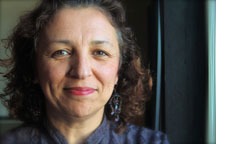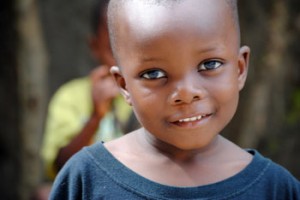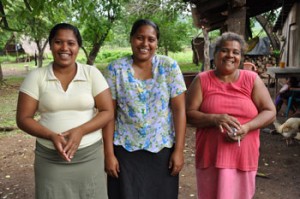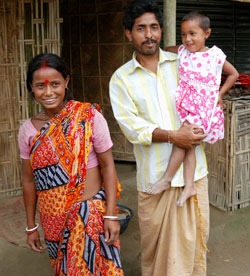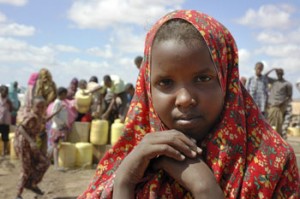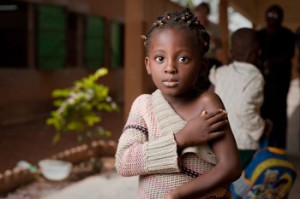October 2011 Newsletter
Welcome to the October 2011 issue of the Global Washington newsletter. If you would like to contact us directly, please email us.
IN THIS ISSUE
- Note from our Executive Director
- Featured Story: Celebrating Global Action Day – 11.1.11
- The Global Giving Platform Is The Latest Global Washington Member Benefit – Sign Up Now!
- Spotlight On Washington’s Global Development Sector
- Welcome New Members
- Announcements
- Global Washington Events
- Other Events
Note from our Executive Director
Greetings,
By now, you may have heard the news that 11.1.11 is Global Action Day. Seattle mayor Mike McGinn has issued an official proclamation declaring November 1st, 2011 a day to celebrate the accomplishments, innovation, leadership, and impact of the global development sector here in Washington State.
Please help us spread the word about this important day! As someone who is involved in global development, we ask that for the next two weeks you mobilize your mailing list, your volunteer base, your coworkers, your fans and your followers! We have created a website, a Media Toolkit and a hash tag to make it fun and easy to share with your networks.
- Find all the information you need about Global Action Day on the website www.globalwaday.org
- Tag all tweets related to the day with #Globalwaday
- Use the Media Toolkit for pre-written Facebook posts, sample emails, and tweets http://www.globalwaday.org/spread-the-word/
I also want to remind you that our Third Annual Conference is coming up on October 31st and November 1st. Last year’s conference convened over 400 members of Washington’s global development sector and was an important time to share ideas and meet others in the field. This year, we will hear from exciting speakers like Dr. Victoria Hale, founder of the non-profit pharmaceutical company Medicines360, and travel guru Rick Steves, who will talk about travel as a political act. You can visit our website for a complete list of speakers and full conference agenda.
Please don’t miss out on Global Action Day, or our annual conference. These are exciting opportunities to connect to others in the field, to celebrate the many accomplishments of Washington’s global development sector, and to continue our work to make the world a more equitable and prosperous place.
In unity,
![]()
Bookda Gheisar, Executive Director
Featured Story
Celebrating Global Action Day – 11.1.11
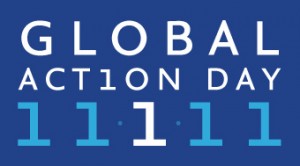 11.1.11 is Global Action Day. November 1, 2011 has been proclaimed by the mayor of Seattle as a day to recognize the accomplishments, innovation, and impact of Washington State’s growing global development sector. Global Action Day is also an opportunity for Washingtonians to learn about, support, and join the more than 140 members of Global Washington who are working to create jobs at home and impact lives abroad by reducing disease, providing educational opportunities, and strengthening communities and economies around the world.
11.1.11 is Global Action Day. November 1, 2011 has been proclaimed by the mayor of Seattle as a day to recognize the accomplishments, innovation, and impact of Washington State’s growing global development sector. Global Action Day is also an opportunity for Washingtonians to learn about, support, and join the more than 140 members of Global Washington who are working to create jobs at home and impact lives abroad by reducing disease, providing educational opportunities, and strengthening communities and economies around the world.
Global Washington has built a website as a landing page for all things global: http://www.globalwaday.org. It provides a quick way to learn about our state’s development sector and has simple suggestions for taking action today–from hosting an exchange student, to learning a foreign language, to shopping more conscientiously—anyone can make a difference!
Maybe you’ve already heard the buzz around this topic! To promote more awareness about global development on and around 11.1.11, Global Washington and 6 of its members are sponsoring promotional pieces in The New York Times, the Wall Street Journal, and Alaska Airlines’ in-flight magazine; radio announcements on KPLU and KUOW; advertising on websites such as Facebook and LinkedIn; and posters on select Washington State ferries.
Celebrate in person: Global Action Day falls on the second day of Global Washington’s 2011 Conference: Opportunities and Obstacles in Turbulent Times. Attended by over 400 members of the global development sector, this conference will be a great opportunity to network with like-minded individuals and learn from experts in the field. The morning of November 1st will feature a special presentation of our first annual Global Hero Award—honoring an individual who inspires us to take action and make a difference in the world. This year’s recipient for lifetime achievement is Professor Roy Prosterman, the founder of Landesa. We hope you will join us on Global Action Day to acknowledge his accomplishments and those of others who are working tirelessly to make the world a better place.
Don’t miss out! Register for the conference and join us on Global Action Day!
Share the enthusiasm: As an individual or employee of an organization that cares about global development, we need your help to spread the word! Mobilize your mailing list, volunteer base, coworkers, fans, and followers to start talking – and keep talking – about global development.
Some quick and easy ways to spread the word:
- Click and share: www.globalwaday.org/
- Tag every tweet with #GlobalWaDay
- Utilize our media kit for more extensive outreach. It is available here: http://www.globalwaday.org/spread-the-word/
The Global Giving Platform is the Latest Global Washington Member Benefit—Sign Up Now!
Global Washington is partnering with Jolkona–a Seattle-based nonprofit that uses technology to facilitate low-cost, high-impact giving to social causes online—to create the Global Giving Platform. This donation site will allow donors to support Global Washington members online in an easy, transparent, and innovative way. Very similar to the “GIVE BIG” campaign by the Seattle Foundation last spring, the Global Giving Platform will allow participating members to create fundraising profiles and begin collecting online donations quickly and easily!
Donors will use the Global Giving Platform to browse organizations that they may want to support. They can make credit card contributions by clicking a “donate now” button on the organization’s profile.
The Global Giving Platform will be permanently housed and accessible on the Global Washington website (www.globalwa.org) and it will also be accessible through the Global Action Day website (www.globalwaday.org). Members are encouraged to link to the platform in their own communications as well.
Eligibility: To have a profile on the Global Giving Platform, you must be a member of Global Washington and have either 501c3 status or a fiscal sponsor.
If you want to participate please contact Kate Lorenzen, kate@globalwa.org (or call for more information 206-547-9392).
Spotlight on Washington’s Global Development Sector
Global Washington is proud to highlight the work of 6 of our member organizations. Please take a moment to learn more about them, celebrate their achievements, and consider supporting their work. This is just a small sample of the ways that Washington’s global development sector is impacting the world. Go to www.globalwaday.org to learn more and find out how you can get involved!
All as One
Description
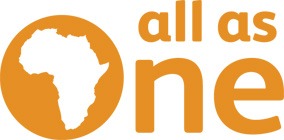 All As One works in Sierra Leone, West Africa – a country still recovering from a decade of civil war. They provide children and women with education, health care and other basic needs through a children’s home, community school and medical clinic. Since 2000, over 25,000 infants, children and adults have been helped with food, shelter, education, medical care, and other assistance.
All As One works in Sierra Leone, West Africa – a country still recovering from a decade of civil war. They provide children and women with education, health care and other basic needs through a children’s home, community school and medical clinic. Since 2000, over 25,000 infants, children and adults have been helped with food, shelter, education, medical care, and other assistance.
Story of Hope
Francis, an abandoned child, now has a loving home at the All As One Children’s Center in Sierra Leone. He’s one of nearly 600 kids who have found a short or long-term home with All as One since 2000. Francis now has hope, a future and the chance to enjoy his childhood!
Global Partnerships
Description
 Founded in 1994, Global Partnerships (GP) is a nonprofit social investor whose mission is to expand opportunity for people living in poverty in Latin America. Working with local partner organizations, GP invests in and develops sustainable solutions to help impoverished people in Latin America earn a living and improve their lives, including microcredit, basic health care, business education, and technical assistance for farmers. At the end of the last fiscal year, GP had more than $36 million invested in 30 partner organizations in seven countries, positively affecting the lives of more than 250,000 people, and advancing business models that can serve millions of people in the future.
Founded in 1994, Global Partnerships (GP) is a nonprofit social investor whose mission is to expand opportunity for people living in poverty in Latin America. Working with local partner organizations, GP invests in and develops sustainable solutions to help impoverished people in Latin America earn a living and improve their lives, including microcredit, basic health care, business education, and technical assistance for farmers. At the end of the last fiscal year, GP had more than $36 million invested in 30 partner organizations in seven countries, positively affecting the lives of more than 250,000 people, and advancing business models that can serve millions of people in the future.
Story of Hope
In a rural community in Nicaragua, these two sisters and their mother are creating a new future for their family. Thanks to programs supported by Global Partnerships, Ana Elisa, Rosa Amelia, and Rosa Esmeralda Gonzalez have received access to microloans, technical assistance and other support that have helped them build thriving small farms. With their profits, they have been able to build homes for their families. A shared dream is to purchase a pump so that they won’t have to haul their water from the river.
Landesa
Description
![]() Landesa partners with governments and local organizations around the world to ensure that poor families have legal rights to the land they till. Founded as the Rural Development Institute in 1967, Landesa has helped more than 100 million poor families gain legal control over their land. When families have secure rights to land, they can invest in their future to increase their harvests and reap the benefits – improved nutrition, health, education, and dignity – for generations.
Landesa partners with governments and local organizations around the world to ensure that poor families have legal rights to the land they till. Founded as the Rural Development Institute in 1967, Landesa has helped more than 100 million poor families gain legal control over their land. When families have secure rights to land, they can invest in their future to increase their harvests and reap the benefits – improved nutrition, health, education, and dignity – for generations.
Story of Hope
Thousands of families across India are literally growing themselves out of poverty using one of Landesa’s innovative tools: the micro-plot. When Uttam and Kamala Mondal became owners of their tennis-court-sized plot of land, they finally had a place to build a home, a garden to boost their children’s nutrition, a place to start a home business, and a foundation for a better future. Landesa is actively partnering with 13 country governments to enact and implement land rights reforms and programs that have helped more than 2 million families gain control over their land in the last year alone. Over the last 40 years our partnerships have benefited 100 million of the world’s poorest families. Our goal is to help 20 million more in the next four years.
Mercy Corps
Description
![]() Mercy Corps is a global humanitarian organization that helps people turn the crises they confront into the opportunities they deserve. Driven by local needs, their programs provide communities in the world’s toughest places with the tools and support they need to transform their own lives. Their worldwide team in 41 countries is improving the lives of 19 million people. For more information, see mercycorps.org.
Mercy Corps is a global humanitarian organization that helps people turn the crises they confront into the opportunities they deserve. Driven by local needs, their programs provide communities in the world’s toughest places with the tools and support they need to transform their own lives. Their worldwide team in 41 countries is improving the lives of 19 million people. For more information, see mercycorps.org.
Story of Hope
Until recently, 10-year-old Fatima spent close to two hours a day trekking around bone-dry northeastern Kenya to fetch water for her family. Often there wasn’t water to be found, or it cost too much money. Now thanks to Mercy Corps’ work trucking water, and repairing and fueling pumps, Fatima and her family can get water cheaper and easier. Fatima is just one of the 900,000 people Mercy Corps is helping in Somalia, Kenya and Ethiopia as they struggle with the worst draught in decades. We’re providing access to life-saving food, water and income, and empowering people to better withstand drought in the future through health services, veterinary care, improved water and livestock management, and other vital resources.
PATH
Description
![]() PATH is an international nonprofit organization that creates sustainable, culturally relevant solutions, enabling communities worldwide to break longstanding cycles of poor health. By collaborating with diverse public – and private – sector partners, PATH helps provide appropriate health technologies and vital strategies that change the way people think and act. PATH’s work improves global health and well-being. For more information, please visit www.path.org.
PATH is an international nonprofit organization that creates sustainable, culturally relevant solutions, enabling communities worldwide to break longstanding cycles of poor health. By collaborating with diverse public – and private – sector partners, PATH helps provide appropriate health technologies and vital strategies that change the way people think and act. PATH’s work improves global health and well-being. For more information, please visit www.path.org.
Story of Hope
For centuries, children like Océane were helpless against the meningitis epidemics that ravaged sub-Saharan Africa. But today, Océane is one of more than 20 million people protected from the disease. In 2010, PATH and the World Health Organization introduced a revolutionary vaccine for meningitis A into Burkina Faso, Mali, and Niger. Among the millions of people who received the vaccine, not a single case was reported during last year’s epidemic season. PATH’s 2011 goal: Introduce the vaccine to several more countries in Africa – and give more than 50 million people a chance for a healthy life.
World Vision
Description
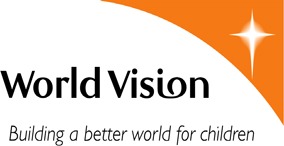 World Vision is a Christian humanitarian organization dedicated to working with children, families, and their communities worldwide to reach their full potential by tackling the causes of poverty and injustice. World Vision’s dedication to the highest stewardship standards is unswerving. The excellence of the organization’s work has earned the trust of more than 3 million donors, supporters, and volunteers; more than half a million child sponsors; thousands of churches; hundreds of corporations; and government agencies in the United States and around the world.
World Vision is a Christian humanitarian organization dedicated to working with children, families, and their communities worldwide to reach their full potential by tackling the causes of poverty and injustice. World Vision’s dedication to the highest stewardship standards is unswerving. The excellence of the organization’s work has earned the trust of more than 3 million donors, supporters, and volunteers; more than half a million child sponsors; thousands of churches; hundreds of corporations; and government agencies in the United States and around the world.
Story of Hope
By equipping children like 12-year-old Rosa in Ecuador to attend school, World Vision is empowering families to break the cycle of poverty. And that’s just one of the many ways they are helping build a better world for children. In nearly 100 countries, World Vision is working to improve access to essentials like educational opportunities, critical healthcare, safe water, nutritious food, and more.
Welcome New Members
Please welcome our newest Global Washington members. Take a moment to familiarize yourself with their work and think of opportunities for support and collaboration!
Create Good Foundation
The Create Good Foundation is committed to helping the lives of poor people who live and work in coffee growing regions around the world through water and economic infrastructure projects. Clean water and jobs for the developing world. www.creategood.org
Hands for Peacemaking Foundation
The mission of Hands For Peacemaking Foundation is to promote opportunities for self-reliance in rural Guatemala. www.handsforpeacemaking.org
East African Community Services
East African Community Services (EACS) was established in 2000 to provide culturally specific advocacy, information, referral and direct social services to Somali, Oromo, Ethiopian and other East African refugees living in King County. www.eastafricancs.org
- Anne Mize
Announcements
Global Washington Seeking Stories Of Individuals Whose Lives Have Been Deeply Impacted By Global Education!
Global Washington’s Global Education Initiative represents a statewide collaboration among leaders from the education, nonprofit, government and business communities. Collaborators are united by their shared commitment to equipping the state’s students to be leaders in 21st century workplaces and communities and to maintaining the innovation and excellence that are synonymous with Washington State’s business, academic and civic institutions. Those involved believe that a globally-oriented K-20 education system is the engine that will power the state’s sustained success in these areas.
Credible research and compelling real-world examples are integral to this work. If you know of people, businesses, institutions or communities with great stories to tell about their successes in the realm of global education and global engagement, we’d love to hear about them! Send your stories to Bookda Gheisar, Bookda@globalwa.org by October 28, 2011.
Click here for more information about the initiative and the kinds of stories we are looking for.
A Gala In Support Of Guatemala
Guatemala Village Health and Pre-Vent will host a dinner on November 5th to raise funds for the maternal-child health services they provide for Healing the Children’s Monterrico Community Clinic and Health Education Center in Guatemala. The evening’s event, held at the Museum of Flight in Tukwila, will include live music, a formal dinner, guest speakers and a silent auction. Congressman Jim McDermott will be the keynote speaker at this event, music performance will be by Sin Fronteras, and dinner will be catered by McCormick and Schmidt. Festivities begin at 5:30pm. Purchase tickets ($75) before November 1st online.
Social Change Is Serious Business: An Innovative Workshop From UW Foster School Of Business
UW Foster School of Business will host the day-long UW Social Ideas to Global Ventures Workshop, Social Change is Serious Business, on October 22, 2011. Open to students of all disciplines, faculty, staff, and community members, the workshop provides a foundational understanding of global social entrepreneurship in developing countries and outlines the process of turning an idea into a viable business. Particular focus will be given to global health and technology. The daylong workshop includes interactive sessions on marketing, management, law, and funding, led by experts from Seattle-based organizations. Students participating in the GWEC competition will have opportunities to exchange ideas and network. The workshop runs from 8:30am to 5:30pm in Paccar Hall, and costs $20 for students and $50 for all other attendees. Register online.
Dining For Dental Care
Smiles Forever will host its 11th Annual Dinner and Auction, “That’s Amore,” on October 22nd. Smiles Forever, supported mainly through private donations, provides indigenous women and children in Bolivia dental care and has founded a dental hygiene clinic that provides job training and employment opportunities for the women. The fundraising event, complete with wine, jazz music, and vegetarian or gluten free dinner options, will be held at the Queen City Yacht Club, Seattle, starting at 6pm. Tickets cost $50 per person, or $350 for a table of eight.
Fighting Poverty Through Innovative Business Solutions: A Competition
Calling all university students around the world and across all disciplines and levels of study. The Global Social Entrepreneurship Competition (GSEC ) invites you to submit innovative business solutions to poverty in developing countries. The application deadline is November 9th, 2011. Fifteen to twenty teams of students from around the globe will be selected to present their ideas to 400+ business professionals at GSEC Week 2012, held in Seattle from Feb. 27 to March 2nd, 2012, and compete for $30,000 in monetary prizes, including global health and Information & Communication Technology (ICT) prizes! Travel scholarships are available for international teams, supported by the Bill & Melinda Gates Foundation. GSEC is organized by UW Foster School of Business each year. Rules, guidelines, and applications are available on the Rules & Prizes page. You can also contact gsec@uw.edu with questions.
Creating Solutions, Awareness And Innovation In Global Health: Another Competition
Calling all high school, community college and undergraduate students in Washington State. Here’s your chance to broadcast your talents and innovation. The “Be the Change” competition, sponsored by Global Health Nexus, is an opportunity for student teams to design projects using technology, social media, the arts and more that create solutions, awareness and innovation in global health. The projects can range from innovative solutions to service delivery issues to advocacy and awareness campaigns through social media. Winning projects will receive a range of prizes, from cash awards to VIP-escorted tours of leading global health organizations, including the Bill & Melinda Gates Foundation and PATH; and participation in the VIP awards ceremony at Seattle Center, as part of the Next Fifty Celebration. Initial project proposals must be submitted by December 15, 2011. For more information and application forms go to Global Health Nexus or contact info@globalhealthnexus.org.
Global Partnerships Adds Colombia To Its Map
The social investor and micro-finance organization, Global Partnerships, has made its first loans to two new partner organizations in Colombia: Fundación Amanecer and Contactar. Fundación Amanecer received a loan of US$1 million to help them build a more diverse economy in Orinoquía, a region of central-east Colombia that has been heavily dependent on the petroleum industry. Micro-entrepreneurship education will help clients boost their skills and income. Contactar, one of the few micro-finance institutions in Colombia focused on rural clients, received US $1.5 million, which will strengthen their program of offering clients access to financial education, savings accounts and basic dental services for their children.“We are excited to help these organizations increase their impact in Colombia, which is one of the most populous countries in Latin America and which faces unique challenges in fighting poverty,” said Mark Coffey, Chief Investment Officer of Global Partnerships.
UW Hosts Talk With Executive Director Of The International Gay And Lesbian Human Rights Commission
The University of Washington’s Gender, Sexuality, and Global Health Working Group is presenting a talk with Cary Alan Johnson, Executive Director of the International Gay and Lesbian Human Rights Commission (IGLHRC) on Tuesday, October 25th. Entitled “The Final Frontier: Why LGBT Global Rights are a Game Changer, and will Liberate Us All,” the talk will take place at the Foege Auditorium (3720 15th Ave NE in Seattle) from 4:30 to 5:30pm and will be followed by a reception. The IGLHRC is a leading international organization dedicated to human rights advocacy on behalf of people who experience discrimination or abuse on the basis of their actual or perceived sexual orientation, gender identity or expression. For more information, contact the Global Health Resource Center at ghrc@uw.edu or 206.685.7362
Fred Hutchinson Cancer Research Center To Build Treatment Center In Uganda
The Fred Hutchinson Cancer Research Center is collaborating with the Uganda Cancer Institute to create a new cancer training and treatment facility in Kampala, Uganda. This innovative project will be the first cancer center to be constructed in partnership between a cancer institution in the U.S. and one in sub-Saharan Africa. Once completed the new facility will be three stories tall and will include exam rooms, procedure suites, pharmacies, an infusion suite, and specialized diagnostic laboratories for both adult and pediatric care.
The groundbreaking ceremony on October 4th was led by Ugandan Vice President Edward Ssekandi and attended by other officials, global health experts, and community leaders. “We are gathered here today to celebrate a great example of a partnership between two institutions dedicated to saving lives – the Uganda Cancer Institute in Uganda and Fred Hutchinson Cancer Research Center in Seattle, Washington.” said Ssekandi in his remarks. “I offer my congratulations to the two institutions who have come together, dedicated to improving the health and well being of people in Uganda and worldwide.”
For more information on this project, visit: http://www.fhcrc.org/about/ne/news/2011/10/11/uganda_groundbreaking_release.html
Tuesdays At iLEAP
The 2011 iLEAP International Fellows are hosting a series of candid discussions exploring critical questions around global philanthropy and development and the relationship between good intentions and impact. iLeap Fellows lead social change initiatives all over the world, including the Dominican Republic, Nicaragua, Papua New Guinea, El Salvador, India, Indonesia, Honduras, and the Philippines. You are invited to join these open dialogues each Tuesday starting October 11th and lasting through November 15th.
Upcoming topics are as follows:
October 25th:Food & Agriculture
November 1st:Environment & Community
November 8th:Youth Empowerment
November 15th:Gender & Development
Click here for more information on Tuesdays at iLEAP, visit www.iLEAP.org, or contact molly@iLEAP.org
Global Washington Events:
October 31st and November 1st
Global Washington’s 3rd Annual Conference
November 18th
Summit on Global Education in Washington State
Other Events:
October 18th – 29th
2011 National School Conference on International Youth
October 19th
Religious Tolerance and Global Cooperation
October 20th
Northwest Immigration Rights Project: An Evening at Wing Luke
October 22nd
University of Washington Invention to Venture Workshop
October 25th
The Final Frontier: Why LGBT Global Rights are a Game Changer, and Will Liberate Us All
October 26th
October 27th
The View from Karachi – What the Mega-City Tells us about Pakistan
October 30th – November 1st
IEEE GLOBAL HUMANITARIAN TECHNOLOGY CONFERENCE (GHTC)
November 1
Save the Date: PeaceTrees Vietnam 16th Anniversary Luncheon
Together We Can: Building Schools and Hope in Seattle Leone
November 5th
PRE-VENT and Guatemala Village Health dinner/Fund-raiser
13th Annual Africa Business Day Forum
November 8th
November 15th
